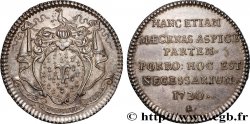Live auction - fwo_537638 - ITALY - FLORENCE - REPUBLIC Florin d'or n.d. Florence
You must signin and be an approved bidder to bid, LOGIN TO BID. Accounts are subject to approval and the approval process takes place within 48 hours. Do not wait until the day a sale closes to register. Clicking on "BID" constitutes acceptance of the terms of use of cgb.fr private live auctions.
Bids must be placed in whole Euro amounts only. The sale will start closing at the time stated on the item description; any bids received at the site after the closing time will not be executed. Transmission times may vary and bids could be rejected if you wait until the last second. For further information check the Live auction FAQ
All winning bids are subject to a 18% buyer’s fee.
All winning bids are subject to a 18% buyer’s fee.
| Estimate : | 1 000 € |
| Price : | 771 € |
| Maximum bid : | 780 € |
| End of the sale : | 03 December 2019 19:25:18 |
| bidders : | 3 bidders |
Type : Florin d'or
Date: (1318)
Date: n.d.
Mint name / Town : Florence
Quantity minted : -
Metal : gold
Millesimal fineness : 986 ‰
Diameter : 20 mm
Orientation dies : 6 h.
Weight : 3,47 g.
Rarity : R2
Coments on the condition:
Exemplaire frappé sur un flan légèrement ovale et voilé. La pièce est bien centrée de part et d’autre et le Jean Baptiste est bien venu à la frappe. Patine homogène de détection
Catalogue references :
Obverse
Obverse legend : + FLOR-ENTIA.
Obverse description : Grande fleur de lis épanouie.
Obverse translation : (Florence).
Reverse
Reverse legend : .S. IOHA-NNES. B (MM).
Reverse description : Saint Jean Baptiste debout de face, nimbé, barbu, vêtu de sa peau de bête, tendant la main droite et tenant un sceptre cruciforme bouleté.
Reverse translation : (Saint Jean-Baptiste).
Commentary
La marque placée au revers, ici un croissant de lune, est le symbole d'un magistrat monétaire. Le fait est que plusieurs magistrats ont utilisé le croissant de lune comme symbole. Il nous est impossible ici de déterminer avec précision l’année d’émission de ce florin. Il a été probablement frappé au XIVe siècle..








 Report a mistake
Report a mistake Print the page
Print the page Share my selection
Share my selection Ask a question
Ask a question Consign / sell
Consign / sell
 Full data
Full data







